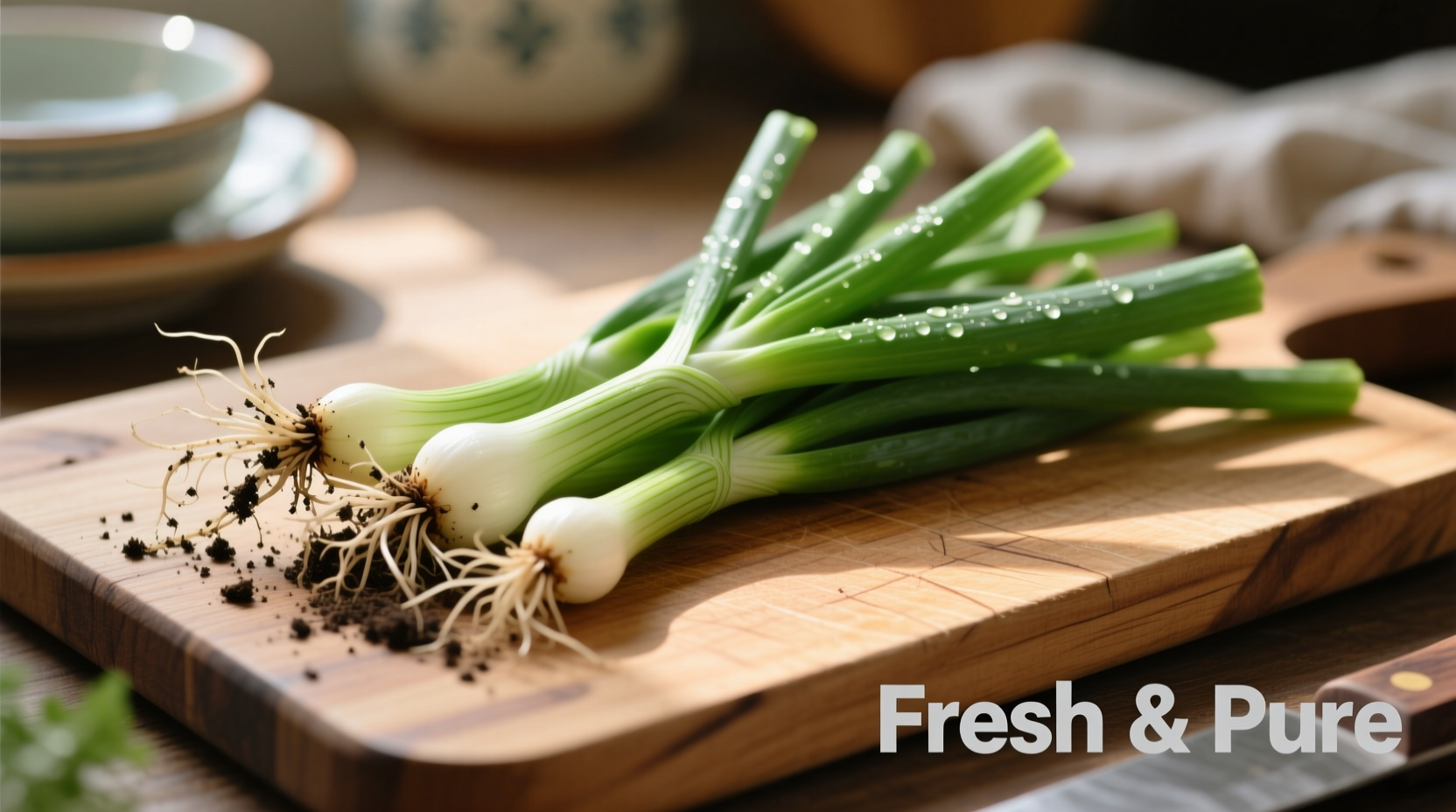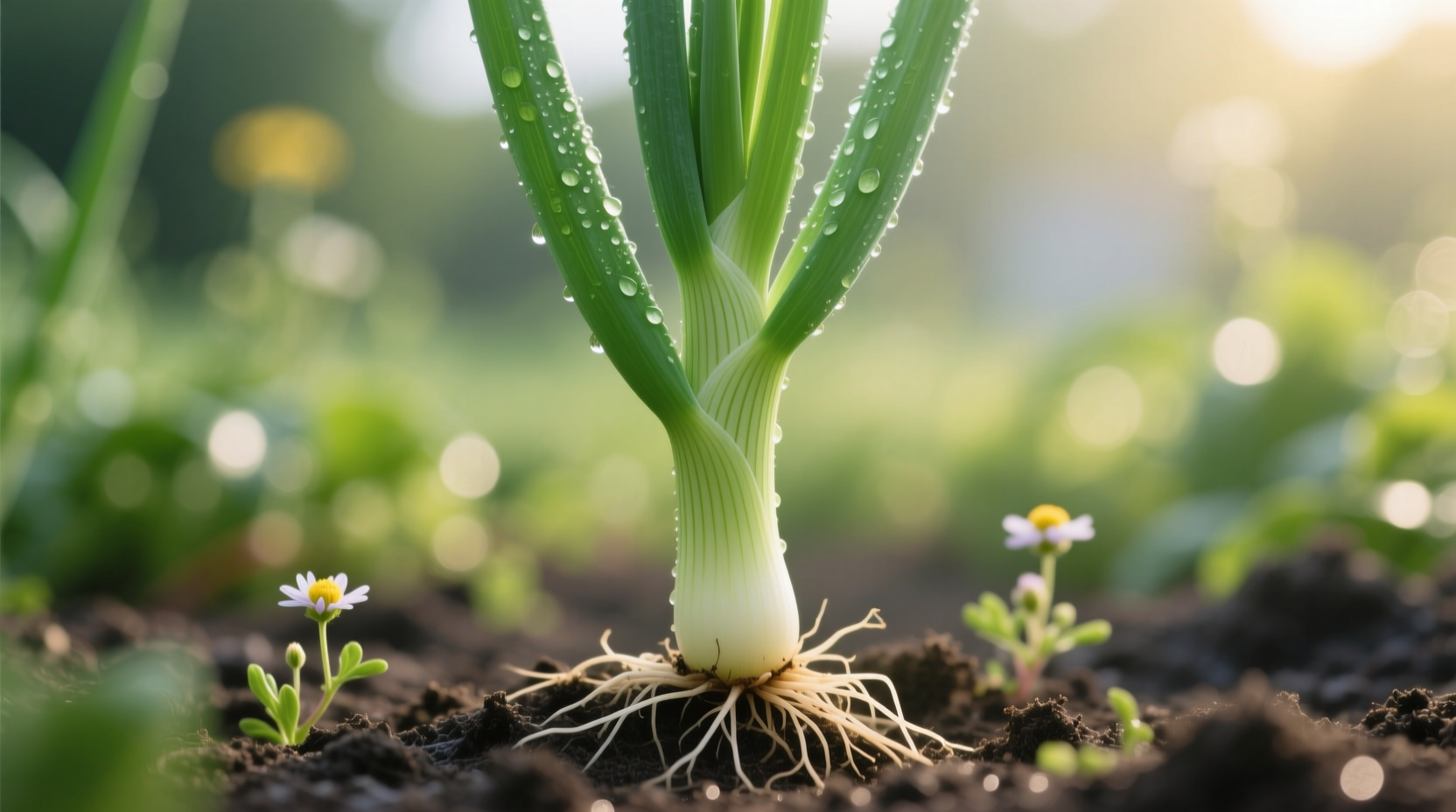Discover everything you need to know about this versatile kitchen staple that elevates dishes from simple garnishes to essential flavor components across global cuisines. Whether you're selecting them at the grocery store, preparing them for cooking, or wondering how they differ from similar alliums, this comprehensive guide provides practical insights you can use immediately.
What Exactly Are Green Onions?
Green onions (Allium fistulosum) represent one of the most widely used fresh alliums in kitchens worldwide. Unlike mature onions that develop large bulbs, green onions are harvested early when the stalk remains tender and the bulb is still slender. This harvesting timing creates their distinctive combination of mild white bulb and crisp green tops.
The entire plant is edible, though the white and green portions offer different flavor intensities and culinary applications. The white section delivers a more pronounced onion flavor, while the green portion provides a grassier, milder taste with vibrant color.

Green Onions vs. Similar Alliums: Clearing the Confusion
| Ingredient | Appearance | Flavor Profile | Best Culinary Uses |
|---|---|---|---|
| Green Onions (Scallions) | Long green stalks, small white bulb, no significant bulb development | Mild, fresh onion flavor throughout | Garnishes, stir-fries, salads, soups (both parts used) |
| Spring Onions | Developing small bulb, green stalks | Slightly stronger flavor, especially in bulb | Grilling, roasting, sautéing (bulb provides more depth) |
| Shallots | Small, elongated bulbs with coppery skin | Sweet, delicate, complex flavor | Vinaigrettes, sauces, delicate dishes where subtle flavor needed |
| Chives | Thin, hollow green tubes, no bulb | Very mild, grassy onion flavor | Garnishes, egg dishes, potato toppings (used raw) |
This comparison clarifies why many recipes specifically call for green onions rather than substitutes. According to research from the USDA Agricultural Research Service, the specific sulfur compounds in green onions create their distinctive flavor profile that differs from other allium varieties, making substitution less than ideal in many culinary applications.
Selecting the Best Green Onions
When choosing green onions at your local market, look for these quality indicators:
- Firm, crisp stalks without wilting or yellowing
- Vibrant green color throughout the stalks
- Firm white bulbs with no soft spots
- Moist root ends indicating freshness
- No flowering (bulbous flowers indicate over-maturity)
University of California Cooperative Extension research shows that green onions with intact roots maintain freshness up to 50% longer than those with roots removed, making root retention an important freshness indicator.
Proper Storage Techniques for Maximum Freshness
Extend your green onions' shelf life with these professional storage methods:
- Refrigerator method: Trim roots to 1 inch, place in glass with 1 inch of water, cover loosely with plastic bag, change water every 2-3 days
- Moist paper towel method: Wrap in slightly damp paper towels, place in perforated plastic bag in vegetable drawer
- Freezing for cooking: Chop and freeze in airtight container (best for cooked dishes, not garnishes)
According to USDA Food Safety and Inspection Service guidelines, properly stored green onions maintain optimal quality for 7-10 days in the refrigerator, significantly longer than many consumers realize.
Culinary Applications: Using Both Parts Effectively
Master chef Liu Wei explains that traditional Chinese cooking separates green onion portions for specific purposes:
- White portions: Added early in cooking for foundational flavor (stir-fries, soups, braises)
- Green portions: Added at the end or used raw for color and fresh flavor (garnishes, cold dishes)
- Whole green onions: Used for stuffings, grilled dishes, or as aromatic bases
For maximum flavor extraction, lightly crush the white portion before slicing to release more aromatic compounds. When using as garnish, slice the green portion at a 45-degree angle for both visual appeal and increased surface area.
Nutritional Benefits Backed by Research
Green onions offer more than just flavor—they provide significant nutritional value. According to USDA National Nutrient Database analysis, one cup of chopped green onions (100g) contains:
- 52% of daily vitamin K requirement
- 27% of daily vitamin C
- 22% of daily vitamin A
- Significant amounts of calcium, iron, and folate
- Only 32 calories per serving
Research published in the Journal of Agricultural and Food Chemistry confirms that green onions contain organosulfur compounds with potential antioxidant and anti-inflammatory properties, though these compounds are most preserved when green onions are consumed raw or lightly cooked.
Common Questions About Green Onions
Can green onions regrow after cutting?
Yes, green onions can regrow multiple times. Place the white root end with 1-2 inches of stalk in water, changing the water every 2-3 days. New growth typically appears within 24-48 hours, and you can harvest the green portion repeatedly while maintaining the root base.
What's the difference between green onions and scallions?
In most markets, green onions and scallions refer to the same vegetable. The term "scallion" typically describes the same immature onion harvested before bulb formation. Some regional variations exist, but culinary applications remain identical regardless of which term is used.
Can I substitute chives for green onions?
You can substitute chives for green onions in raw applications, but not vice versa. Chives have a much milder flavor and different texture. Use three times the amount of chives to approximate green onion flavor, but remember they won't provide the same white bulb component that adds depth to cooked dishes.
Why do my green onions become slimy in the refrigerator?
Green onions become slimy when stored in airtight containers without proper moisture control. The solution is to store them with controlled humidity—either in a perforated bag with a damp paper towel or standing in water with the tops loosely covered. Excess moisture trapped against the stalks causes bacterial growth leading to sliminess.
Are green onion flowers edible?
Yes, green onion flowers are completely edible and offer a mild onion flavor. They make beautiful, flavorful additions to salads, soups, and as garnishes. However, flowering indicates the plant is past its prime for stalk usage, as the stalks become tough and the flavor intensifies.











 浙公网安备
33010002000092号
浙公网安备
33010002000092号 浙B2-20120091-4
浙B2-20120091-4